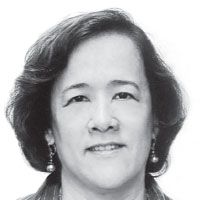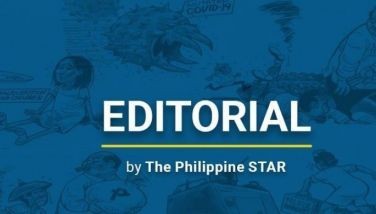Leap year for 2012

Like any other New Year event, it has become sort of a tradition in our Tuesday Club to start every new calendar looking at the economic performance of the year just past and what lies ahead for the Philippine economy. And every first Tuesday of the year, we always have Bangko Sentral ng Pilipinas (BSP) Governor Amando Tetangco Jr. as our first guest to do this honor in our weekly breakfast gathering at the EDSA Shangri-La in Mandaluyong City.
Thus, for the past seven years that I have attended the Tuesday Club as a member, I have come to associate Tetangco as the bearer of good news at the turn of each new year. For this year though, Tetangco seemed to be the one seeking good news.
So through these years he has appeared before us at the Tuesday Club as BSP Governor, Tetangco always prefaced his talk about the Philippine economy on very positive notes. And with surgical-like precision, he dishes up fiscal and monetary policy issues and challenges that are likely to influence the performance of the Philippine economy for the new year ahead.
So far, Tetangco reassured us, the Philippine economy has not been significantly affected by the global economic and financial turmoil. This is because, he pointed out, “in part due to the buffers we have built through consistent reform and calibrated policy measures.” But clearly, the Philippines is not immune, he warned, to what he termed as “economic fault lines” or risk factors.
Tetangco grimly conceded the underspending by the government in 2011 has pulled down economic growth to 3.6 percent in the first three quarters of last year. The country’s gross domestic product (GDP) expanded by only 3.2 percent in the third quarter of last year from 7.3 percent in the same period in 2010.
“If the Philippines is to protect the moderate growth gains and even dream of catching up with our neighbors, the country needs to formulate policies that will maximize the benefits from the buffers we have so far built,” Tetangco urged.
“Together with an appropriate monetary policy stance, targeted government spending and the participation of the private sector could ensure that all engines of growth are firing up,” Tetangco said.
As BSP Governor, Tetangco chairs the seven-man Monetary Board (MB) which is the highest monetary policy-making body in the Philippines. While it may not be a constitutional body, the old as well as the new BSP charter has created it as an independent body although the BSP Governor and the Monetary Board members are all presidential appointees.
The BSP’s primary objective is to maintain price stability conducive to a balanced and sustainable economic growth. It also aims to promote and preserve monetary stability and the convertibility of the Philippine peso as our national currency.
Under the New Central Bank Act, the BSP performs liquidity management, currency issue, financial supervision, management of foreign currency reserves, and determines exchange rate policy.
Tetangco has demonstrated his being the most cautiously optimistic monetary official in this part of the world. This was especially so during the most difficult times of the financial meltdown that started in the US in the early part of 2008.
Tetangco obviously draws much of his cautious optimism from the fact that our country has deeply rooted strong macro-economic fundamentals. There should be no argument it was largely the result of drastic but strong fiscal reforms instituted during the administration of former President Gloria Macapagal-Arroyo.
Long before the global financial upheaval took place, the Arroyo administration launched a fiscal program that forced the Filipino people to swallow a number of “bitter pills” in terms of tax measures passed into law by Congress. It included the most unpopular administration bill that increased the rate of expanded value added tax (EVAT) from ten to 12 percent and removal of previous VAT exemption of oil products and electricity.
In the aftermath of the “Hello, Garci” scandal, Mrs. Arroyo paid a dear price for it, among other things. She became the most vilified President, with popularity rating that went all the way down to negative. But the country’s economic picture, to her credit, remained strong despite the global crisis with the country’s GDP posting 34 consecutive quarters of economic growth.
Fast forward. President Benigno Aquino III reappointed last year Tetangco as BSP Governor for an unprecedented second six-year term that will end on July 2, 2017. Tetangco started serving as BSP governor in July 2005 when he was first appointed by former President Arroyo. His term was supposed to expire July last year.
Tetangco graduated cum laude with an economics degree from the Ateneo de Manila University and obtained his Master’s in Public Policy and Administration with concentration in Development Economics at the University of Wisconsin as a Central Bank scholar. Tetangco has been named as one of the world’s best central bankers for two consecutive years.
Like Tetangco, Arroyo-MB member Alfredo Antonio was also given a new mandate of a second six-year term by P-Noy. Tetangco and Antonio are joined at the MB by three other Aquino nominees. Ergo, they compose the majority.
The three other Aquino appointees to the MB are, namely, Finance Secretary Cesar Purisima and Felipe Medalla, former Economic Planning Secretary of ex-President Joseph Estrada; and retired BSP deputy governor Armando L. Suratos. They all will serve at the MB until July 3, 2017.
Only two Arroyo appointees remain as MB members with fixed terms of office. They are, former Trade Secretary Peter Favila and ex-press secretary Ignacio “Toting” Bunye, both of whom would serve until 2014.
With the exception of the members of the Cabinet, the BSP Governor and the MB members serve terms of six years and may only be removed for cause. This is not to mention such other reasons as resignation, incapacity, or death.
For 2012, which coincidentally is a leap year, Tetangco noted with obvious cautious optimism Palace pronouncements to step up government spending starting with the P72 billion “stimulus” package released late last year.
Frankly, however, it will not be enough to push the Philippine economy to grow by leaps and bounds.
- Latest
- Trending




























